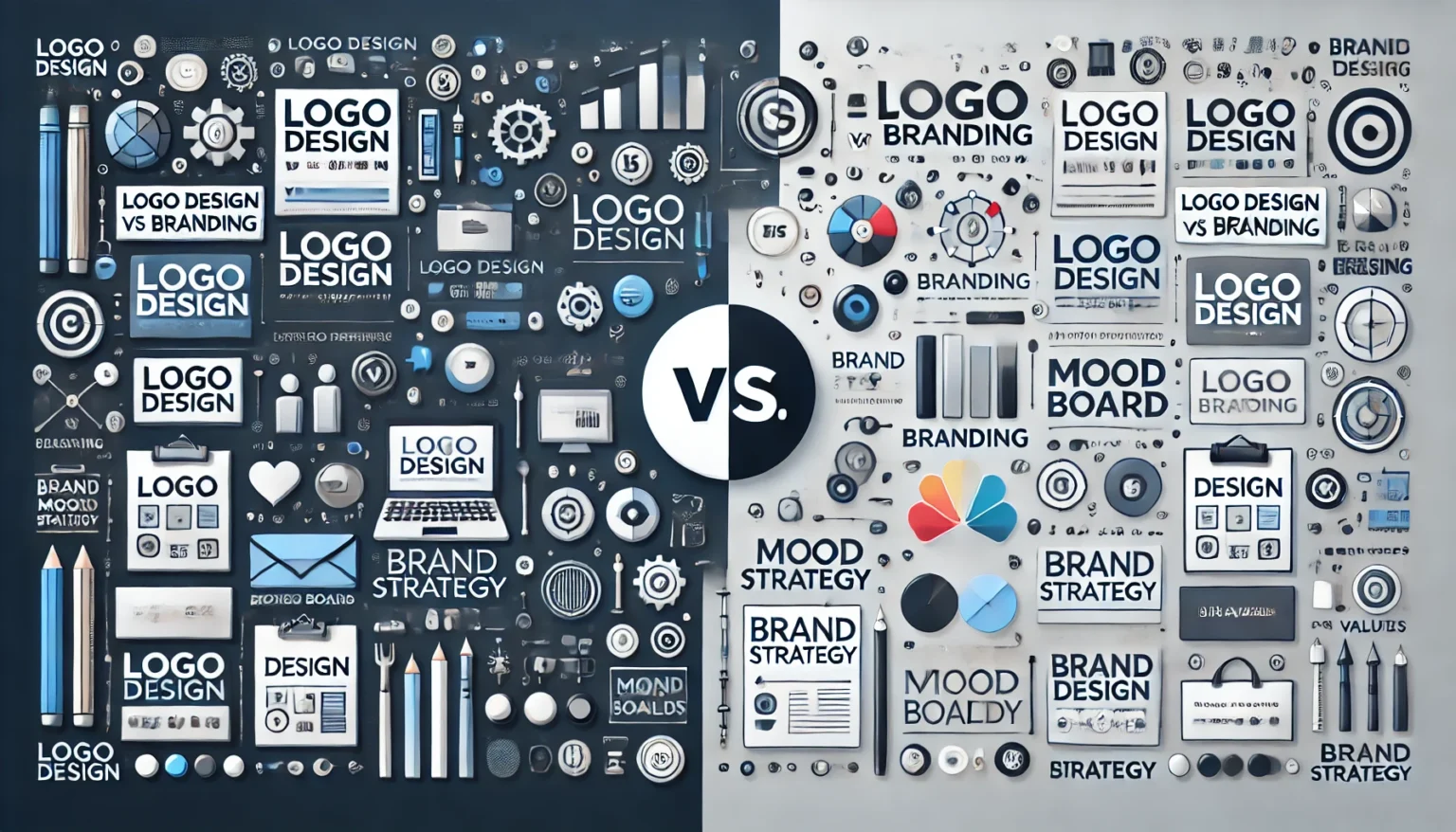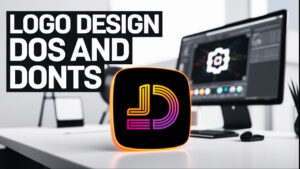Logo Design vs Branding: Understanding the Differences
When building a business, your ability to stand out is crucial in a crowded market. Customers form impressions quickly, and those impressions often come from visual and emotional cues. Two terms often thrown around in this context are logo design and branding.
Although they are interconnected, they serve different purposes. A logo is a graphic symbol representing your business. It’s the visual “face” that people associate with your company. Branding, on the other hand, is the entire experience your business offers—its values, personality, tone, and even how it makes people feel.
Understanding these differences helps businesses allocate resources wisely and build a strong, cohesive identity that resonates with their audience. Let’s dive deeper into each to understand how they work separately—and together.
What is Logo Design?
Logo design is the art of creating a unique visual mark that identifies your business. Think of some of the world’s most recognizable logos: Apple’s apple, McDonald’s golden arches, and Nike’s swoosh. Each one is simple yet powerful, encapsulating the essence of the brand it represents.
A logo’s primary job is to act as a visual shortcut to your business. People should be able to glance at it and associate it with your products, services, or values. However, a logo doesn’t carry the full weight of a brand. Instead, it serves as an anchor for your brand identity.
Beyond just aesthetics, a great logo communicates your business’s purpose and personality. Whether bold and modern or elegant and traditional, the style of your logo sends a message to your audience about what they can expect from your business.
Key Elements of a Great Logo
Creating a strong logo involves several key components. Let’s break them down:
- Simplicity: Simple designs are easier to recognize and remember. Overly complicated logos may fail to leave a lasting impression.
- Relevance: A logo should reflect your industry, mission, or brand values. For instance, a tech company may favor sleek, modern designs, while a bakery might lean toward whimsical or vintage styles.
- Timelessness: Trends fade, but a great logo remains relevant over decades. Avoid overly trendy fonts or graphics that may feel outdated in a few years.
- Scalability: A logo should look just as good on a business card as on a billboard. It needs to retain clarity and impact at all sizes.
- Memorability: A distinctive logo sticks in people’s minds, helping your business stay top-of-mind when customers are ready to buy.
What is Branding?
Branding is the comprehensive process of crafting and managing your business’s identity and perception. It goes beyond a single design element like a logo to include everything that shapes how people view your business.
Think of branding as the personality of your company. It involves the tone of your messaging, the style of your visuals, and the way your customers feel when they interact with your brand. Branding builds an emotional connection that fosters trust and loyalty over time.
For example, Coca-Cola’s branding extends far beyond its logo. From its joyful messaging to its signature red packaging, everything about the brand reinforces the idea of happiness, togetherness, and timeless tradition.
Components of a Strong Brand Identity
To build a strong brand identity, consider these essential elements:
- Visual Design: This includes your logo, typography, color palette, and imagery. Consistency across all these elements helps create a recognizable brand.
- Tone and Voice: The way your brand communicates with customers matters. Are you professional and formal, or friendly and casual? Consistency in tone builds trust and familiarity.
- Values and Mission: Your brand should reflect what your business stands for. These core principles guide your decisions and influence how people perceive you.
- Customer Touchpoints: Every interaction, from your website design to how employees handle customer inquiries, is part of your branding. A positive, seamless experience strengthens your brand.
How Logo Design and Branding Work Together
Although logo design and branding are distinct, they function as complementary parts of a larger whole. Your logo is the visual entry point into your brand. It’s what people see first, and it often creates their initial impression.
Branding, meanwhile, provides the substance and context that make your logo meaningful. A great logo paired with weak branding feels hollow, while strong branding without a logo can lack recognizability.
Take Nike, for example. The swoosh is instantly recognizable, but it’s the branding—”Just Do It,” endorsements from athletes, and innovative products—that give the logo its power. Together, they create an iconic brand that inspires trust and loyalty.
Why Branding Goes Beyond a Logo
Your logo is just one piece of the puzzle. Branding encompasses the entire experience someone has with your business. It’s about emotions, trust, and consistency.
A strong brand tells a story. It helps customers understand what you stand for and why they should care. Every detail matters, from the packaging of your product to the tone of your social media posts. These interactions shape how customers feel about your business—and whether they’ll come back.
For example, consider Starbucks. The green mermaid logo is iconic, but it’s the branding—friendly baristas, cozy store designs, and a commitment to sustainability—that keeps customers loyal.
Choosing the Right Approach for Your Business
To decide where to focus, assess your business goals. If you’re just starting out, investing in a logo is a smart first step. A strong logo establishes your visual identity and makes your business recognizable.
However, branding should follow closely behind. Without a cohesive brand strategy, even the best-designed logo won’t resonate. Branding gives your logo context and creates a memorable impression that extends far beyond a single image.
By combining logo design and branding, you create a business identity that is both recognizable and meaningful. The result is a lasting connection with your audience that sets you apart from the competition.





